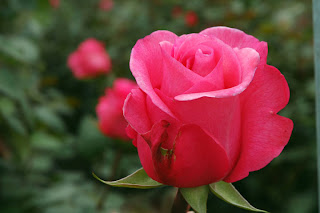Not really raspberry, and not a beret; just a stream of consciousness provoked by the sight of these superb flowers that are available at the moment. They remind me of the motifs found in paisley shawls. with their strange curling teardrop designs. And of course paisley was so much part of the mid-eighties music, spearheaded by Prince and his "Paisley Park" recording studios. Paisley is name given to an ancient pattern that originated in former empires located in what is now Iran, Pakistan and Afghanistan. The actual origin of the pattern is lost in the mists of time, although many have speculated that it may be derived from cypress and palm fronds. Personally, I find the patterns far too intricate and beautiful to be drawn from such basic forms, and find the structure and petal displacement of the Eremurus as a much more inspiring and plausible candidate. The original species of Eremurii originate in the foothills of the Himalayas, and to anyone who saw them rising out of the harsh, rocky terrain in late spring, soaring to five, six and even seven feet in height, the effect must have been impressive and worthy of recording in design. Occasionally in Los Angeles the rather unwieldy Eremurus Himalaicus will make an appearance, but other hybrids have generally replaced these awesome specimens, being a rather more manageable 3'-4' in height.
Eremurus was referred to as "Foxtail Lily" for many years but the name too seems to have lapsed in usage, but a stem of fully open flowers with the curling twist at the end of the stem displays all the bushiness of a fox's tail. The thing is; has any one seen a fox lately?
These flowers are currently being imported from Chile, though they seem to out of season, even for that country. Nonetheless they are a harbinger of the crop that will be available in California in about another six or seven weeks, And they really are delightful flowers: Dynamic line flowers with tremendous vase life in pastel shades of peach, pink, white, peach and yellow. They add height to any situation and should be considered for event work due to their massive scale.
So how did a kasmiri motif end up being called Paisley? It seems that British soldiers returning from tours of duty during the Indian Wars of the 1800's would bring home souvenirs for their wives and family. many of these ended up in the Scottish borders, renowned for their weaving prowess. The village of Paisley was one such center, and the arrival of the kashmiri shawls coincided with the arrival of the Jacquard looms, which were in effect the world's first "computer" applications. In the mid 1800s Paisley weavers were able to produce fabulous fabrics with these intricate Kashmir designs, and which became popular throughout Britain and the world. Ironically, while they produced things of beauty on machines, featuring as many as 15 colors; they still paled in comparison to the handwoven textiles from the Himalayan foothills with as many as sixty colors!
The design had waves of popularity, enjoying a massive revival in the sixties, and this was picked up again by fashionistas in the eighties. And I still see some now and again today.
Tip: In installations and weeklies, remove open or spent flowers at the base of the inflorescence. That will encourage the rest of the florets to open and extend the usefulness of the flowers significantly.
























